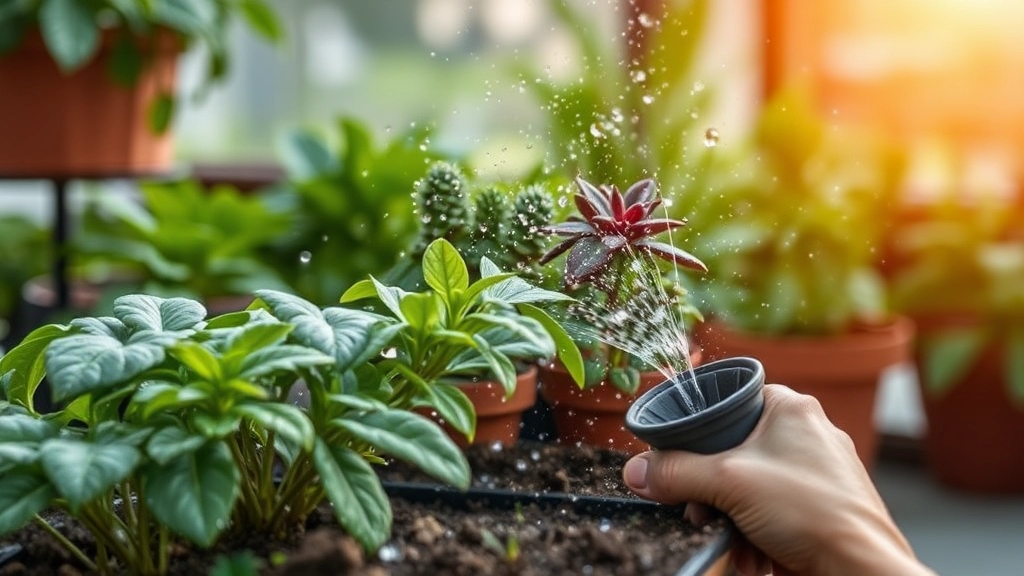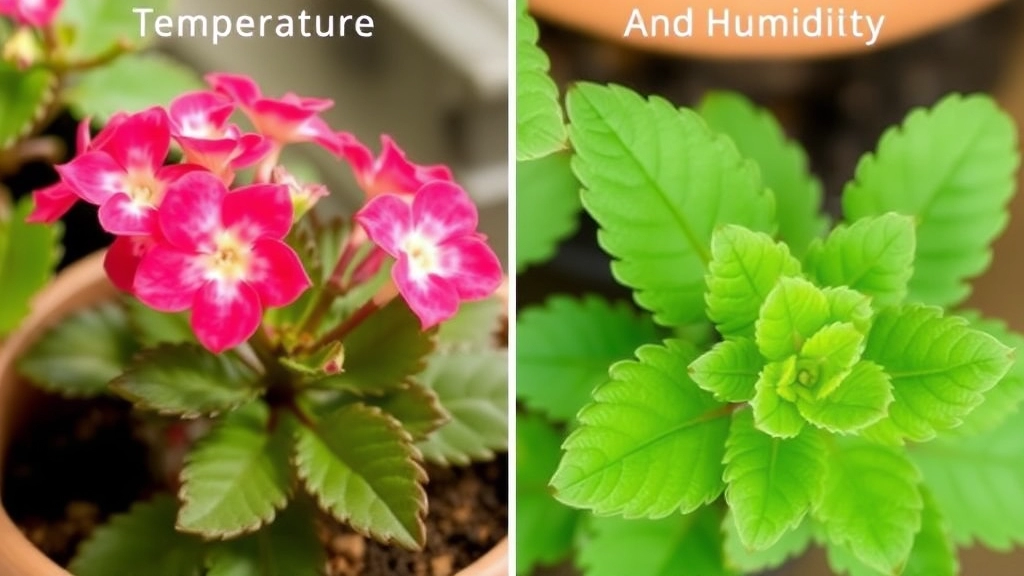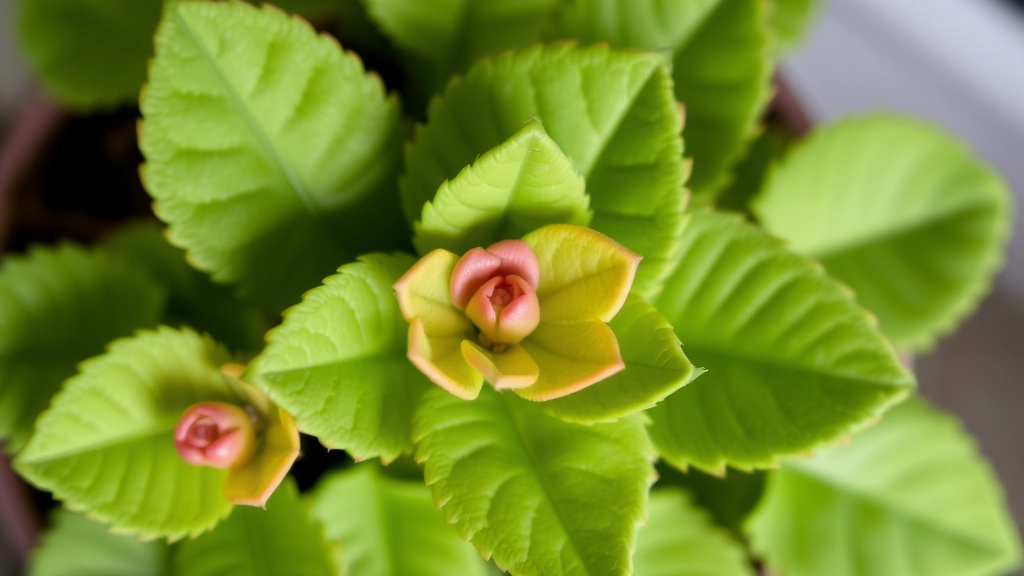Kalanchoe Leaf Softening: Causes and Remedies
Have you noticed your Kalanchoe leaves turning soft? You’re not alone. This common issue can be a sign of various underlying problems, from overwatering to nutrient deficiencies. As a Kalanchoe owner, it’s essential to understand the causes and remedies to keep your plant healthy and thriving.
Common Causes
- Overwatering: A frequent culprit, leading to mushy leaves and root rot.
- Underwatering: On the flip side, underwatering can also cause leaves to soften.
- Environmental Factors: Temperature and humidity can affect leaf health.
- Nutrient Intake: The plant’s nutrient levels play a critical role.
Restoring Your Kalanchoe’s Health
By identifying and addressing these factors, you can restore your Kalanchoe’s health and prevent future issues.
Causes of Soft Leaves in Kalanchoe Plants
As a Kalanchoe enthusiast, you may have noticed your plant’s leaves becoming soft and limp. This can be quite concerning, especially when you’ve invested time and care into its growth. Understanding the underlying causes is crucial for maintaining the health of your Kalanchoe.
Common Causes of Soft Leaves
- Overwatering: One of the most common reasons for soft leaves is overwatering. When the roots sit in waterlogged soil, they can’t breathe, leading to root rot. For more tips, check out our Optimal Watering Tips for Healthy Florist Kalanchoe.
- Underwatering: Conversely, underwatering can also cause leaves to soften. Lack of moisture can lead to dehydration, making the leaves lose their firmness.
- Temperature Fluctuations: Kalanchoe plants thrive in stable temperatures. Extreme heat or cold can stress the plant, resulting in soft leaves. Learn more about the Ideal Temperature for Kalanchoe Blossfeldiana Growth.
- Humidity Levels: High humidity can promote fungal diseases, while low humidity can dry out the leaves. Both conditions can lead to softness.
- Nutrient Deficiencies: A lack of essential nutrients, particularly potassium and magnesium, can weaken the plant. This deficiency can manifest as soft, droopy leaves.
- Pests and Diseases: Infestations from pests like aphids or mealybugs can sap the plant’s strength. Fungal infections can also cause leaves to become soft and mushy.
Impact of Overwatering and How to Fix It

Ever looked at your Kalanchoe and thought, “Why are the leaves so soft?”
Chances are, overwatering might be the culprit.
When Kalanchoe plants get too much water, their leaves can become mushy and limp. This happens because the roots are drowning, leading to root rot.
Here’s how to spot the signs of overwatering:
- Soft, droopy leaves: They might feel squishy to the touch.
- Yellowing leaves: This often indicates stress from excess moisture.
- Foul smell: If your plant smells off, that’s a red flag for root rot.
How to Fix Overwatering
Don’t worry; it’s not too late to rescue your Kalanchoe! Here’s what you can do:
- Check the soil: Stick your finger an inch or two into the soil. If it’s soggy, it’s time to act.
- Repotting: If you find root rot, carefully remove the plant from its pot. Trim away any black or mushy roots and repot it in fresh, dry soil.
- Adjust your watering schedule: Let the soil dry out completely between waterings. Kalanchoes prefer a “drench and dry” approach.
- Improve drainage: Make sure your pot has drainage holes. Consider adding perlite or sand to the soil mix for better airflow.
- Monitor humidity: Kalanchoes thrive in lower humidity. If your home is humid, consider using a dehumidifier.
When caring for Kalanchoe plants, it’s crucial to strike the right balance in watering. Just as overwatering can lead to soft leaves, underwatering can also be a significant issue.
### Identifying Signs of Underwatering:
– **Wrinkled Leaves:** The most obvious sign is the appearance of wrinkles or shrivelling in the leaves. This indicates that the plant is not receiving enough moisture.
– **Leaf Drop:** If you notice leaves falling off, particularly the lower ones, it’s a sign that your Kalanchoe is stressed due to lack of water.
– **Dry Soil:** Check the soil; if it feels bone dry several inches down, your plant is likely underwatered.
– **Stunted Growth:** A Kalanchoe that isn’t growing or developing new leaves may be suffering from insufficient water.
### Corrective Measures:
– **Water Thoroughly:** When you notice these signs, give your Kalanchoe a good drink. Ensure the water penetrates the soil deeply, allowing the roots to absorb moisture effectively.
– **Adjust Watering Schedule:** Establish a regular watering routine, typically every 2-3 weeks, depending on your environment. Always check the soil moisture before watering.
– **Use Well-Draining Soil:** Ensure you’re using a potting mix that allows excess water to drain. This prevents waterlogging, which can further complicate care.
– **Humidity Considerations:** If your home is particularly dry, consider misting the leaves occasionally or placing a humidity tray nearby.
For more detailed tips on watering and maintaining healthy growth, check out our [essential tips for healthy growth](https://planthq.org/florist-kalanchoe-plant-care-essential-tips-for-healthy-growth/) and learn how to [fix drooping Kalanchoe leaves](https://planthq.org/how-to-fix-drooping-kalanchoe-leaves-causes-and-solutions/).
How Temperature and Humidity Affect Kalanchoe Leaves

Have you ever noticed your Kalanchoe leaves becoming soft, and wondered if environmental factors were to blame?
Temperature and humidity play crucial roles in the health of your Kalanchoe plants.
Optimal Conditions
Kalanchoe thrives in warm and dry conditions. Ideally, they prefer temperatures between 18°C and 24°C.
Effects of High Temperatures
- Soft Leaves: When temperatures exceed 30°C, Kalanchoe can become stressed, leading to soft and wilting leaves.
- Increased Water Loss: High heat accelerates evaporation, which can result in dehydration.
Effects of Low Temperatures
- Chilling Damage: Temperatures below 10°C can cause the leaves to soften and may even lead to rot if combined with excess moisture.
- Stunted Growth: Cold conditions can hinder the plant’s ability to absorb nutrients effectively.
Humidity Levels
- Low Humidity: Kalanchoe prefers humidity levels between 40% and 60%. If the air is too dry, leaves may become soft and droopy.
- High Humidity: Conversely, excessive humidity can promote fungal diseases, further compromising leaf health.
Practical Tips
- Monitor Temperature: Keep your plants away from drafts and heating vents.
- Use a Hygrometer: This tool can help you track humidity levels effectively.
- Adjust Accordingly: If the air is too dry, consider misting your Kalanchoe or placing a humidifier nearby.
Nutrient Deficiencies That Lead to Soft Kalanchoe Leaves
Have you noticed your Kalanchoe leaves becoming soft and limp? Nutrient deficiencies could be the culprit.
Kalanchoe plants thrive on a balanced diet of essential nutrients. When they lack key elements, the leaves can lose their firmness and vitality. Here are some common nutrient deficiencies that can lead to soft leaves:
- Nitrogen Deficiency: Nitrogen is crucial for overall plant growth. A lack of it can cause yellowing leaves, leading to softness.
- Calcium Deficiency: Calcium helps maintain cell structure. Without it, leaves may become weak and prone to drooping.
- Magnesium Deficiency: Magnesium supports chlorophyll production. A deficiency can result in pale leaves that feel soft and mushy.
- Potassium Deficiency: Potassium is vital for water regulation. Insufficient potassium can lead to wilting and soft leaves.
To address these deficiencies, consider the following corrective measures:
- Fertilise Regularly: Use a balanced fertiliser every few weeks during the growing season. Look for options high in nitrogen, potassium, and magnesium.
- Soil Testing: Conduct a soil test to identify specific nutrient deficiencies. This will guide you in selecting the right fertiliser.
- Organic Amendments: Incorporate organic matter such as compost or well-rotted manure to enrich the soil with essential nutrients.
For more in-depth information on caring for specific Kalanchoe varieties, check out our Mother of Thousands care guide and our Panda Plant care guide.
Best Practices for Watering and Maintenance to Prevent Soft Leaves
So, you’ve noticed those soft leaves on your Kalanchoe, and you’re probably wondering how to keep them healthy and perky.
Well, the good news is that with the right care, you can prevent those soft leaves from becoming a regular issue.
Here are some best practices to keep your Kalanchoe thriving:
- Watering Schedule:
- Water your Kalanchoe only when the top inch of soil is dry.
- In the growing season (spring and summer), this might mean watering once a week.
- In winter, cut back to every two to three weeks.
- Drainage Matters:
- Ensure your pot has drainage holes.
- Use a well-draining soil mix. Cactus or succulent soil works wonders.
- Humidity Control:
- Kalanchoe loves dry air.
- Keep it away from humid areas like bathrooms or kitchens.
- Light Conditions:
- Place your Kalanchoe in bright, indirect sunlight.
- Too much direct sun can scorch the leaves, while too little can lead to weak growth.
- Temperature Awareness:
- Aim for a temperature range of 15-25°C (59-77°F).
- Avoid sudden temperature drops, especially during winter.
- Fertilisation:
- Feed your plant with a balanced, diluted fertiliser during the growing season.
- Skip fertilising in the winter months.
By following these simple tips, you’ll set your Kalanchoe up for success and keep those leaves firm and healthy. For more detailed information, check out our guide on different Kalanchoe species and our expert tips on Kalanchoe care.
FAQs on Kalanchoe Leaves Turning Soft
Why are my Kalanchoe leaves turning soft?
Soft Kalanchoe leaves are often a sign of overwatering, which leads to root rot. It can also be due to environmental factors like extreme temperatures and improper humidity levels.
How can I tell if my Kalanchoe is overwatered?
Look for soft, droopy leaves that feel squishy, yellowing leaves, and a foul smell indicating root rot.
What should I do if my Kalanchoe is overwatered?
Check the soil moisture, repot the plant if necessary, adjust your watering schedule to let the soil dry out between waterings, improve drainage, and monitor humidity levels.
What are the optimal temperature and humidity conditions for Kalanchoe?
Kalanchoe thrives in temperatures between 18°C and 24°C and prefers humidity levels between 40% and 60%.
How do high temperatures affect Kalanchoe leaves?
High temperatures above 30°C can stress the plant, leading to soft, wilting leaves and increased water loss through evaporation.
What happens to Kalanchoe leaves in low temperatures?
Temperatures below 10°C can cause chilling damage, making the leaves soft and potentially leading to rot if combined with excess moisture. Cold conditions can also stunt the plant’s growth.
How does humidity affect Kalanchoe leaves?
Low humidity can cause leaves to become soft and droopy, while high humidity can promote fungal diseases, compromising leaf health.
What practical tips can help maintain healthy Kalanchoe leaves?
Monitor temperature, keep plants away from drafts and heating vents, use a hygrometer to track humidity levels, and adjust conditions as needed, such as misting the plant or using a humidifier if the air is too dry.
References
-
Gardening Know How: Overwatering Kalanchoe
-
The Spruce: How to Grow and Care for Kalanchoe
-
The Old Farmer’s Almanac: Kalanchoe Plant Care
